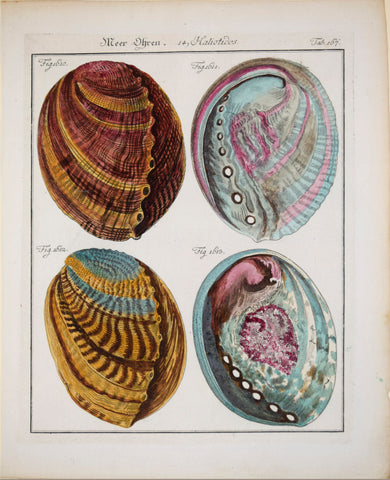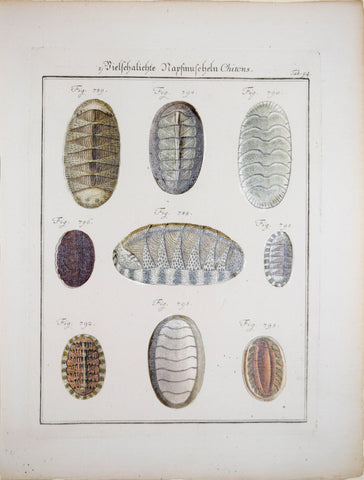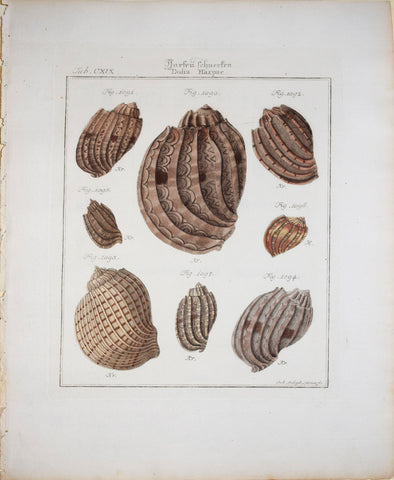Search By Artist
F.H. Martini & J.H. Chemnitz
from Neues Systematisches Conchlyien-Cabinet
Copperplate engraving with original hand-color
Paper size approximately 9 1/4” x 12”
Published in Nuremburg: G G. N. Raspe, 1768 - 1795.
The great 19th-century interest in shells was part of a tradition in which gifted artists pursued their interests in the natural world with a zeal and ability that is rarely found today, and collectors responded with equal fascination. The explosion of interest in shells and their correct classification began in the late 18th century, stimulated, to a degree, by the beautiful examples brought back by the various Pacific voyagers. Exhibitions and printed works by authors such as Thomas Martyn (“The Universal Conchologist”: 1784-92), Captain Thomas Brown, Emanuel Mendes da Costa, John Mawe, George Perry, Lovell Augustus Reeve, George Brettingham Sowerby, William Swainson, William Wood, and others, fueled a common interest in conchology.
In 1769, Hamburg-based physician and naturalist FH Martini began the publication of Neues Systematische Conchlyien-Cabinet, a 12-volume iconography on marine shells. He derived his specimens from several sources, such as the Wunderkammer of nobility, the collections of esteemed naturalists such as Albertus Seba, and wealthy, sea-faring merchants. Notably, the illustrations from the first three volumes portray shells gathered during the travels of Captain James Cook, the famous voyager of the Pacific.
Martini's ambition was to record every shell kind known. A year after his death in 1778, Conchlyien was taken over by clergyman and conchologist Johan-Hieronymus Chemnitz, adding, between 1779 and 1796, 8 additional volumes. A landmark work in natural scientific art, Concylyien is regarded as the first full-color and large-scale iconography on shells ever made, masterfully conveying the beauty and intricacy of shells.




